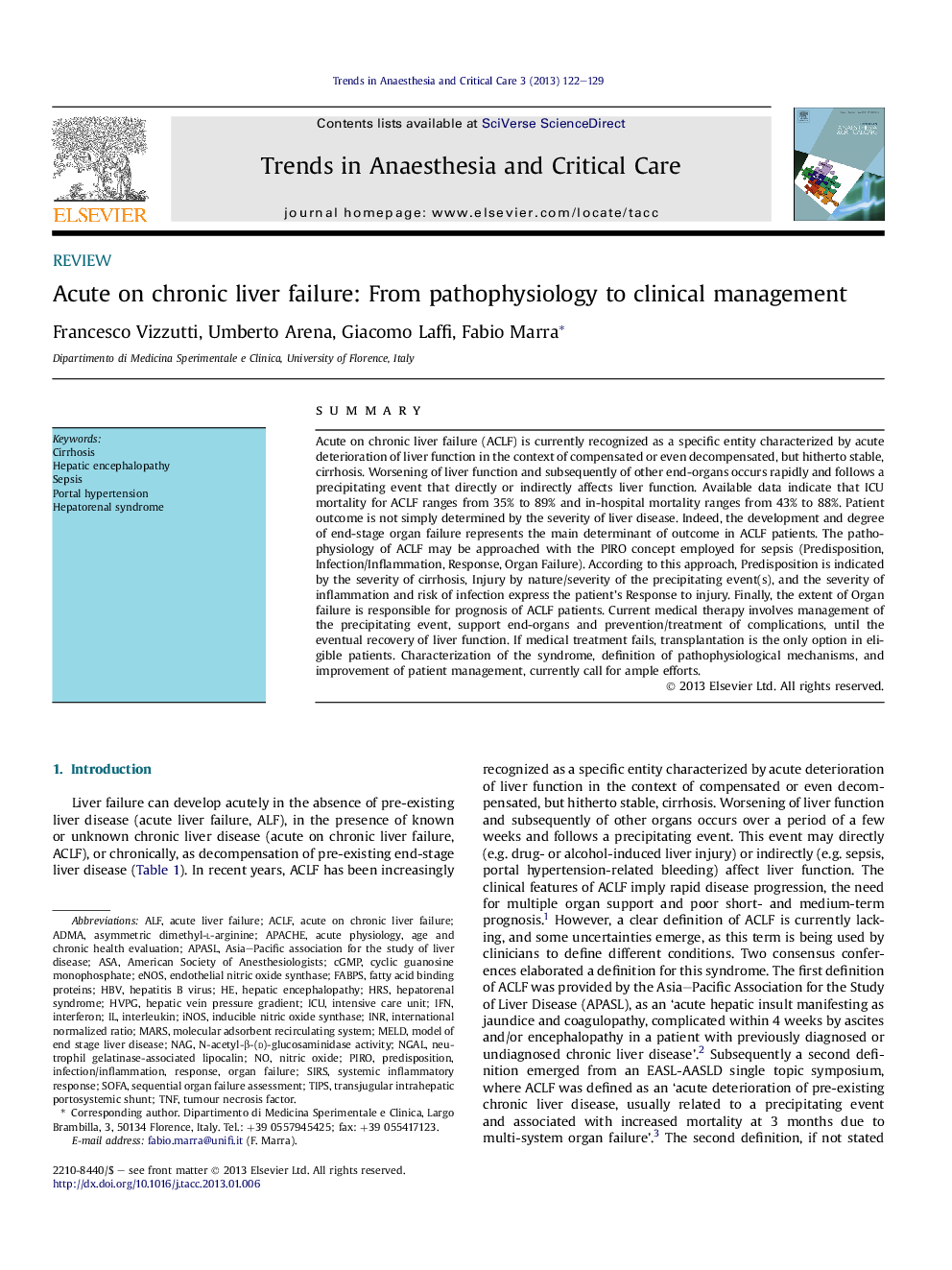| Article ID | Journal | Published Year | Pages | File Type |
|---|---|---|---|---|
| 2772796 | Trends in Anaesthesia and Critical Care | 2013 | 8 Pages |
SummaryAcute on chronic liver failure (ACLF) is currently recognized as a specific entity characterized by acute deterioration of liver function in the context of compensated or even decompensated, but hitherto stable, cirrhosis. Worsening of liver function and subsequently of other end-organs occurs rapidly and follows a precipitating event that directly or indirectly affects liver function. Available data indicate that ICU mortality for ACLF ranges from 35% to 89% and in-hospital mortality ranges from 43% to 88%. Patient outcome is not simply determined by the severity of liver disease. Indeed, the development and degree of end-stage organ failure represents the main determinant of outcome in ACLF patients. The pathophysiology of ACLF may be approached with the PIRO concept employed for sepsis (Predisposition, Infection/Inflammation, Response, Organ Failure). According to this approach, Predisposition is indicated by the severity of cirrhosis, Injury by nature/severity of the precipitating event(s), and the severity of inflammation and risk of infection express the patient's Response to injury. Finally, the extent of Organ failure is responsible for prognosis of ACLF patients. Current medical therapy involves management of the precipitating event, support end-organs and prevention/treatment of complications, until the eventual recovery of liver function. If medical treatment fails, transplantation is the only option in eligible patients. Characterization of the syndrome, definition of pathophysiological mechanisms, and improvement of patient management, currently call for ample efforts.
